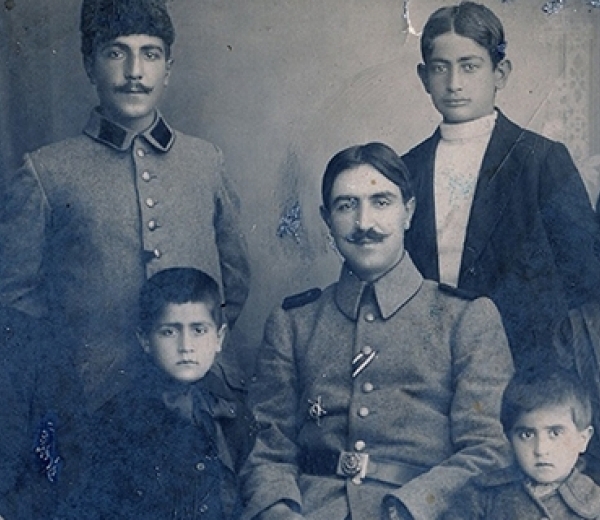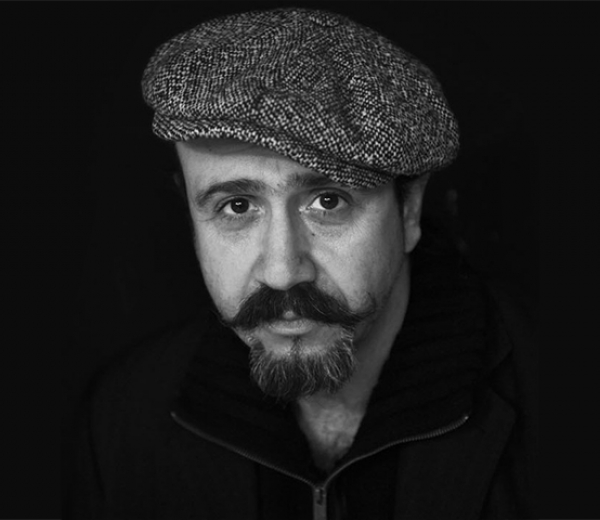Antoine Agoudjian
Submitted by global publisher on Fri, 07/22/2016 - 13:13
English
Intro:
Fifty-four year old adventurer and photographer Antoine Agoudjian has been roaming the Middle East and the Caucasus for 20 years, searching for subjects to photograph. In 2011, he became the first photographer to ever hold an exhibition in Turkey dedicated to the taboo subject of the Armenian Genocide.
Weight:
-9 700
Story elements:
Text:
Fifty-four year old adventurer and photographer Antoine Agoudjian has been roaming the Middle East and the Caucasus for 20 years, searching for subjects to photograph. In 2011, he became the first photographer to ever hold an exhibition in Turkey dedicated to the taboo subject of the Armenian Genocide.
Text:
Born on February 6, 1961 at Saint-Maur near Paris, Antoine Haroutyun Agoudjian is the youngest of three children. His mother Ankiné and his father Clement worked in the textile industry. Antoine grew up and still lives in Alfortville, known as “the small Armenia by the Seine.”
He belongs to the third (and last) generation that has personally known Genocide survivors. In 2000, the photographer initiated an ambitious project on the subject of Armenian memory, with the Genocide of 1915 at its core. His project took him to Jerusalem, Lebanon, Syria, Turkey, Iraq, Iran, Georgia and Nagorno-Karabakh.
On occasion of the Armenian Genocide centennial in 2015, Flammarion Publishing released his latest book showcasing nearly 30 years of his work, titled “The Cry of Silence, Traces of an Armenian Memory” and prefaced by his friend, comedian, director and playwright Simon Abkarian.
Grandchild of Ottoman Officer
Antoine’s maternal grandfather Artin Arydjian, originally from Erzrum (present-day eastern Turkey), was an Ottoman Army officer when World War I broke out. Captain Arydjian was still fulfilling his duty in Konya, central Anatolia, when the first convoys of deportees arrived. He was able to order his soldiers to free the Armenian deportees entering Konya, and Antoine even remembers meeting the descendants of those who survived thanks to his grandfather’s intervention. However, that reprieve was short-lived.
Image:

Text:
|
Artin Arydjian (center) in his Ottoman Army uniform |
Forced to flee, Artin went to Lebanon, then to Bulgaria. He married Epraksé, a young Armenian girl. “My grandfather was very active in the Armenian community life of Varna, a city on the Black Sea shore. He helped to build the Armenian church in that city,” Antoine Remembers. At some point, the couple left Bulgaria and headed to France.
Antoine’s father’s father, Anton Uyudjian, was born in Ankara and moved to Kuthaya in western Anatolia to work at a boiler company that belonged to his father-in-law to be. In 1915, a heavy shadow fell over the family: Anton miraculously survived after having been stabbed 17 times.
His young bride Varvar and all of his family escaped death thanks to the vali (governor) of Kuthaya, Faik Ali Ozansoy.
The vali was a poet, steeped in the humanist values of Sufism. His brother Suleiman Nazif, a former journalist, was the vali of Mossoul in 1915, then of Baghdad one year later. In a letter addressed to his brother, Suleiman Nazif urged Ali Ozansoy to preserve their family honor and not take any part in the extermination of Armenians. The vali of Kuthaya went from Bagdad to Constantinople and stopped at Ras al-Ain, where he was devastated by the terrible sight of slaughtered women’s naked corpses lying on the railway roadbed. The smell of decaying corpses horrified him. “The Armenian massacres will mark the darkest page in Turkish history,” he told the Turkish officials in town.
During his own visit to Kuthaya many years later, Antoine discovered that “Faik Ali Ozansoy’s name had disappeared from the Town Hall archives of Kuthaya. On his tombstone, it is only mentioned that he was a poet. The Turks wanted to erase his story, so that no mark of their crime remains.”
After the family reached Salonica, they went to Marseille. Upon their arrival in 1924, a French official gave them identity papers under the name of Agoudjian. Grandmother Varvar, who was pregnant on the journey, gave birth to Antoine’s father Clement in Marseille. The family separated, with some members deciding to continue on to Argentina. “Among five children, including my married grandfather, three went to Argentina, and two stayed in Marseille,” Antoine says.
Little Armenia in France
In the mid-1950s, Antoine’s paternal grandparents settled in Alfortville, southeast of Paris. They set up a clothing factory. “My paternal side spoke Turkish and Armenian. My parents, without being fanatics, wanted us to grow up as Armenians, but it was forbidden to talk about the Genocide in the house. In the 1960s, Alfortville was like an Armenian village, with its farms, from where we brought milk, and its fields and swamps,” Antoine remembers.
As a child, Antoine was boisterous, unruly and unfocused. From 1971 to 1975, he attended the Mkhitarian boarding school at Sevres. His Armenian identity first manifested itself through traditional dance, and he became a dancer in the Navasart group, touring in France and abroad. The Commando of ASALA’s (Armenian Secret Army for the Liberation of Armenia’) assault on the Turkish consulate in Paris made Antoine even more interested in the Armenian cause.
“We should understand that our generation had the horrible impression that Armenians would disappear. Demonstrations were banned in front of the Armenian church in Paris. The media never spoke about us. We did not even have the right to demand that the Genocide be recognized,” he says.
An act of love
Antoine was especially interested in Armenia’s Soviet epoch. He learned about the dissident movement by regularly reading the New Armenian Resistance journal. In 1983, he travelled to his homeland for the first time to visit his dance colleagues. The “true Armenians” admired the young Armenian from France. They reminded him of his grandparents. In 1988, after the earthquake in Armenia, the Soviet Union opened its borders to humanitarian aid. The opportunity to live in his ancestral land beckoned Antoine.
He went on a two-year long mission as a logistician and interpreter, and set up a project for orphaned and disabled children. In Armenia, he first learned to form a sentence in Armenian and took his first photographs. When he returned to France in 1990, Marseille-based Parentheses published his first collection of images titled “Fire Under the Ice,” with an introduction by the great Italian author Alberto Moravio. It would be the first book in a series to come.
With his exquisite, moving images, Antoine Agoudjian would go on to create a unique artistic work about Armenian memory. In his own words: “It is an act of love, which one feels in his flesh toward his nation, without necessarily speaking its language or practicing its religion.”
The story is verified by the 100 LIVES Research Team.
Subtitle:
French-Armenian photographer explores and documents memory
Story number:
15
Author:
Tigrane Yegavian
Header image:

